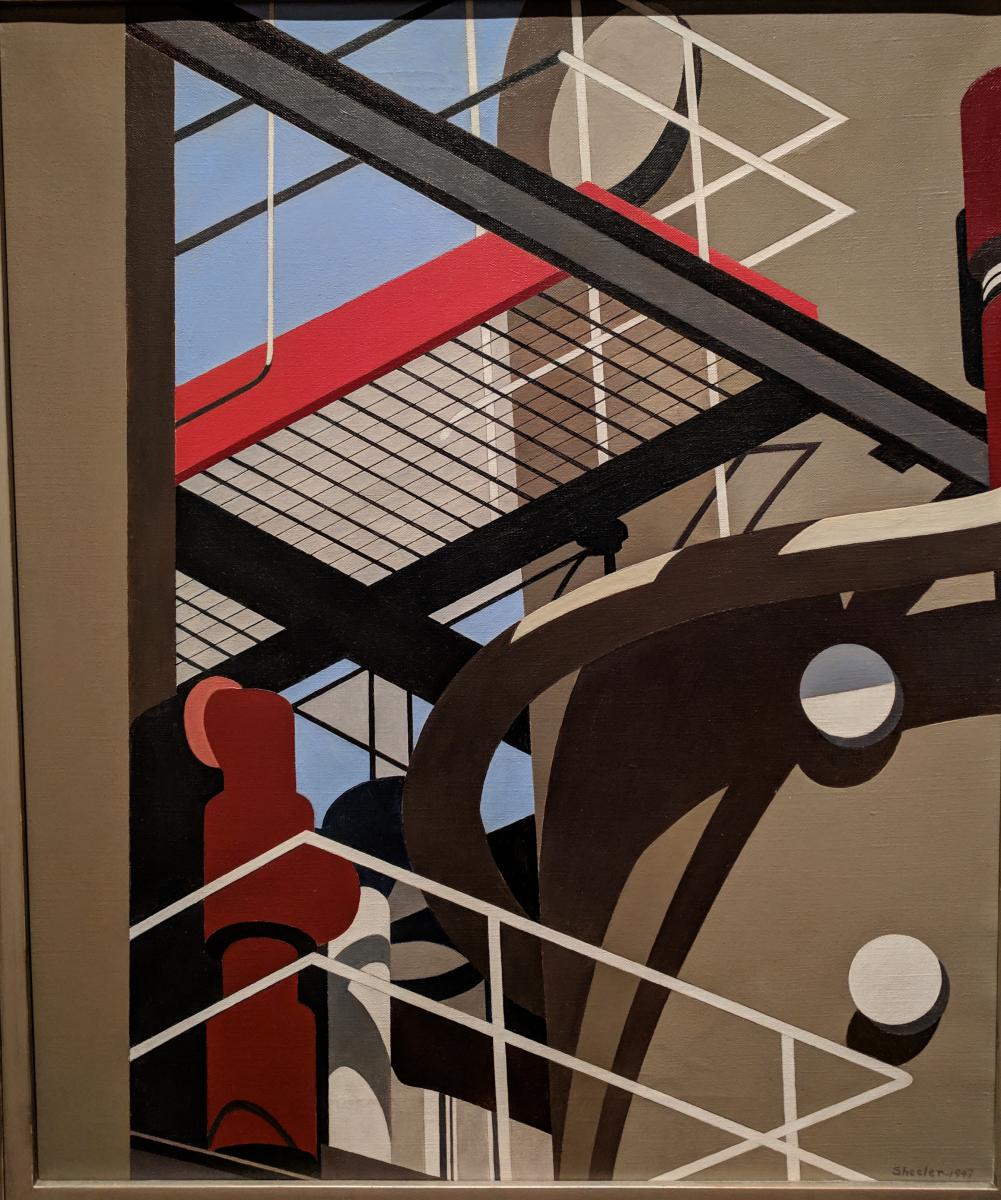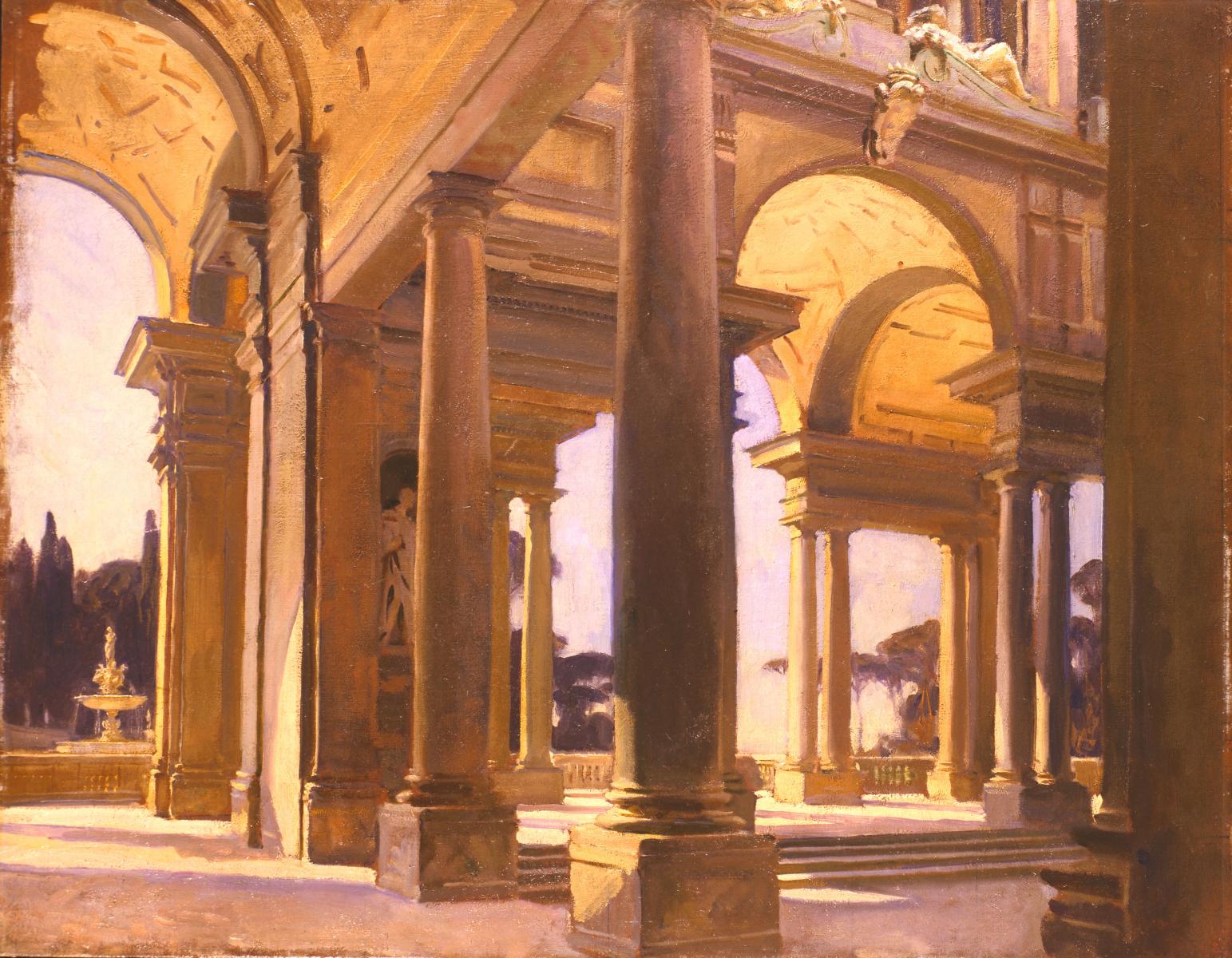Circumambulation - Version 2
Circumambulation (from Latin circum, around, and ambulātus to walk) is the act of moving around a sacred object or idol.
Circumambulation (from Latin circum, around, and ambulātus to walk) is the act of moving around a sacred object or idol.

In the mid-1940s, Charles Sheeler photographed a rubber plant in West Virginia, focusing on industrial details, including exterior pipes, cylinders, and cat-walks. The paintings he made from these photographs demonstrate his interest in overlapping shapes and shadows—in this picture, the function of the machinery is shown as being secondary to their appearance. In Sheeler's view, his industrial pictures were less about labor than about “the perception of order in the visual world…and its expression in purely plastic terms.”

In this view of Florence, Italy, Sargent places the viewer in front of the portico of the Uffizi Gallery. We look through the columns and archways towards the lush Boboli Gardens across the Arno River. Sargent collapses the distance between these two landmarks, creating a single place where the morning sun illuminates the day, bathing the city's great artistic and natural treasures in a golden glow.
Milton Avery was perhaps the most influential artist to sustain a viable figurative tradition between the 1930s and 1950s, creating works that defied categorization and which were embraced by Abstract Expressionists and Color Field artists who saw him as a kindred spirit. Mark Rothko eulogized him in 1965: "Avery is first a great poet. His is the poetry of sheer loveliness, of sheer beauty. Thanks to him this kind of poetry has been able to survive in our time."

Black Sea was painted at a pivotal point in the artist's career, one year after his first major museum exhibition. The subject almost certainly was inspired by his regular summer vacations in Gloucester, Massachusetts, where he sketched and painted outdoors. Avery often painted watercolors on site, and he would later translate these compositions into oils in his New York studio. The striking black and yellow colors evoke the moments after sunset, when the sunlight gradually fades into darkness.

The tattered clothes of these children identify them immediately as working-class. Likely the offspring of the immigrant population that grew New York City by more than 300,000 people over ten years, these children are burdened by an overcrowded and under resourced urban environment. Despite the circumstances the boys come to the aid of a lost girl and, in so doing, create an idyllic scene of community and support.
Charles Christian Nahl was born in Germany in 1818 to a family of artists. He studied in Kassel and Paris before his family joined the Gold Rush, arriving in California in 1851. After a brief time mining, Nahl focused on art, painting portraits of miners and making a visual record of the people, places, plants, and animals he encountered in the West. He went on to establish a studio in San Francisco and was one of the first painters to enjoy the patronage of wealthy Californians.
Detour
In a special collaboration with Google Arts & Culture, artist Ana Prvački leads an alternative tour of the museum, prompting visitors to look anew at the building, grounds, and collections, and imagine different ways of viewing, connecting, and behaving.
Charles Willson Peale is best remembered for his portraits of eminent Americans. When he was in his forties, after painting hundreds of portraits of politicians, scientists, and business leaders, Peale established a museum of art and natural history for the American people. The Philadelphia Museum became the first important museum in America. In addition to portraits and natural specimens, the museum featured a complete mastodon skeleton—Peale had directed the dig in New York in 1801.